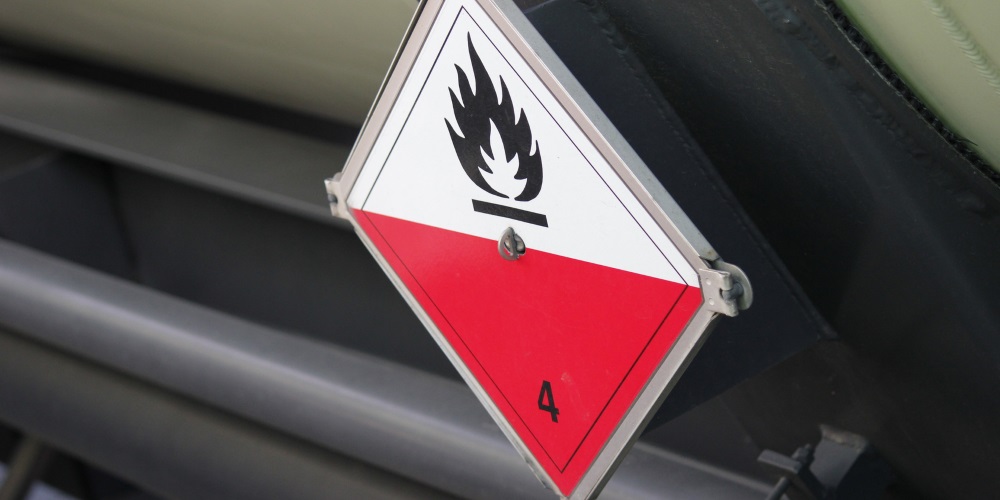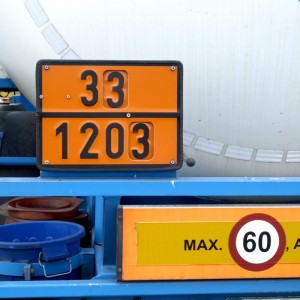
Carriage of Dangerous Materials
Dangerous materials are goods which, due to their properties, present a potential hazard. These properties (considered dangerous) will not present any hazard in transport, if adequate precautions are taken. The definition of dangerous materials does not only include the literally dangerous goods, such as: acids, explosives or poisons, but also such materials as: magnets, cooling gases, bleach, aerosols and many other materials for everyday use.
 The principles of international carriage of hazardous materials:
The principles of international carriage of hazardous materials:
– by air are set out in the Dangerous Goods Regulations by the International Air Transport Association (IATA), based on Annex 18 to the Chicago Convention: “The Safe Transport of Dangerous Goods by Air” by the International Civil Aviation Organisation (ICAO), a UN agency, generally referred to as the ICAO Technical Instructions,
– by road are set out in the European Agreement Concerning the International Carriage of Dangerous Goods by Road (ADR) by the UN Economic Commission for Europe (ECE).
Generally, the dangerous materials are divided into classes and subclasses in accordance with the hazard they present. On the basis of this division there were detailed lists prepared for each type of transport regarding the class or subclass of the materials which may be transported by road or by air and the conditions the individual materials need to meet. On the other hand, the use of the UN system (UN numbers) ensures coherence between the international means of transport, so the shipment may be transported by more than one of them without the need of re-classification and re-packing at the individual transport stages.
There are also the general packing requirements and the Packing Instructions drawn up for each type of transport, whose aim it is to ensure the safety of the dangerous materials during transport by air or by road, by means of using the proper packaging in the proper manner. The packaging requirements are valid in any circumstances with some exceptions; the Packing Instructions require mainly the UN certified packaging, but sometimes it is not necessary; for instance, if a Limited Quantity of the dangerous materials is transported, the quantity of the material which may be put in the primary receptacles of one shipment item is strictly determined. It is supposed to minimise the natural hazard presented by the dangerous materials, so that serious body injuries or property damage are avoided if anything happens.
Once the dangerous materials have been packed, the shipment items containing them must be marked with the vital information, such as the UN number, and must bear the labels listing all the potential hazards presented by the contents of the shipment. This is to ensure, that the shipment containing dangerous goods is easily recognized and that the potential hazard is transparent without the need to consult the accompanying documentation.
The dangerous goods way bill is attached to the majority of the shipments in order to provide the detailed information about these materials, so that there exists an independent means of shipment identification, if needed.
Security
The dangerous materials may be safely transported provided that certain security measures are taken. The principles and procedures include:
- adequate classification of the dangerous materials;
- making sure that no prohibited materials are transported, unless there is an exception for them;
- the use of packaging which meets the specified requirements and making sure that the limits of goods per packaging are observed;
- providing all involved staff with trainings which are obligatory, regular and adequate in the meaning of the legal provisions;
- adequate declaration of the dangerous materials;
The training on the transport of dangerous goods is important in understanding the philosophy behind and the requirements set out in the Technical Instructions and the European Agreement Concerning the Safe Carriage of Dangerous Goods by Road (ADR)
Each time our specialist team is trained on the new regulations, marks and labels and there are regular qualifications and licence refreshment sessions held as well.
However, 1.3. IATA DGR, emphasises the responsibility of the SENDER and sets out some of their obligations such as:
- to follow the requirements of the ICAO – TI manual when shipping dangerous materials by air transport;
- to observe all legal regulations in each country – i.e. The country of origin, transit, and destination;
- to make sure that the dangerous materials are not banned from air transport;
- to make sure that the items or materials have been adequately identified, classified, packed, marked, that they have the adequate labels and required documents in accordance with ICAO TI.;
- to make sure that all persons involved in the preparation of the shipment have been trained as required so that they can bear the responsibility related to the transport of dangerous goods by air (if the Sender does not have any trained personnel, they can authorise other persons/businesses to represent them and to take over all responsibility for the preparation of the shipment; such persons must be trained as required).
The obligations of the SENDER in road transport in accordance with 1.4.2.1 of the ADR Agreement:
The Sender of the dangerous goods shall deliver only shipments meeting the ADR requirements, and is, among others, obliged to:
- make sure that the dangerous materials have been classified and allowed to be transported, as set forth in the ADR;
- provide the carrier with the information and data which is possible to confirm and, if necessary, with the required way bills and the supplementary documents (permits, notices, certificates, etc.);
- use only the packaging, intermediate bulk containers (IBCs) and tanks (fixed tanks, demountable tanks,MEGC, battery-vehicles, portable tankers and tanker containers) which are approved and appropriate for the transport of the materials and are marked as required by ADR;
- observe the shipment requirements and limits.
Classification of Dangerous Materials
If the Sender classifies the dangerous goods correctly, the transport requirements for these goods will be met.
Incorrect classification may lead to improper packaging, marking, loading and information.
When are the dangerous goods dangerous?
The dangerous materials become dangerous when they get out of the packaging and/or interact with another substance causing a chemical reaction. The dangerous materials become dangerous when they get out of the packaging and/or interact with another substance causing a chemical reaction.
Here are some examples of dangerous chemical reactions:
- acids (such as electrolyte) and alkalis (e.g. caustic soda) attack light metals from which air planes are made;
- flammable gases (such as aerosols or those in tourist gas cylinders) may become explosives if mixed with air;
- oxygen interacts with fats causing spontaneous ignition.
| Class or subclass | Classification of hazards |
|---|---|
1 | Explosive substances and articles |
1.1 | Substances with mass explosion hazard |
1.2 | Substances with projection hazard but no mass explosion hazard |
1.3 | Substances with fire hazard or minor projection hazard or both |
1.4 | Substances with no significant hazard |
1.5 | Very insensitive substances with mass explosion hazard |
1.6 | Extremely insensitive articles with no mass explosion hazard |
 |
|
2 | Gases |
2.1 | Flammable gases |
2.2 | Non-flammable, non-toxic gases |
2.3 | Toxic gases |
 |
|
3 | Flammable liquids |
 |
|
4 | Flammable solids, self-reactive substances and substances which, in contact with water, emit flammable gases |
4.1 | Flammable solids, self-reactive substances and solid desensitized explosives |
4.2 | Substances liable to spontaneous combustion |
4.3 | Substances which, in contact with water, emit flammable gases |
 |
|
5 | Oxidizing substances and organic peroxides |
5.1 | Oxidizing substances |
5.2 | Organic peroxides |
 |
|
6 | Toxic and infectious substances |
6.1 | Toxic substances |
6.2 | Infectious substances |
 |
|
7 | Radioactive material |
 |
|
8 | Corrosive substances |
 |
|
9 | Miscellaneous dangerous substances and articles |
 |
